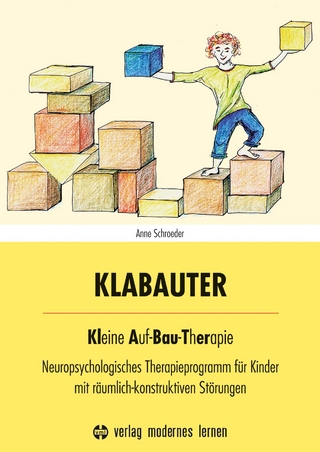
Stevens′ Handbook of Experimental Psychology
John Wiley & Sons Inc (Verlag)
978-0-471-65020-1 (ISBN)
- Titel ist leider vergriffen;
keine Neuauflage - Artikel merken
For over half a century, the Stevensa Handbook of Experimental Psychology has served as the definitive reference for the field. In an era when the field of experimental psychology appears to be experiencing much fractionation, the Stevensa Handbook of Experimental Psychology continues to serve as a cohesive reference unifying the diverse body of research. The Third Edition continues the rigorous tradition set by Stanley Stevens of adhering to a level of scholarship sufficient to serve the needs of academics, and a level of clarity to aid graduate students just beginning in the field. aeoRevised and updated edition of the definitive resource for experimental psychology offers comprehensive coverage of the latest findings in the field, as well as the explosion of research in neuroscience. aeoThe most reputable resource available in the field -- Stanley Smith Stevensa research and writing has influenced generations of experimental psychologists. aeoExpanded coverage -- from two to four volumes, including in--depth material on Methodology, Behavioral Genetics, and more. Individual volumes available separately. See below.
Hal Pashler has been Professor of Psychology at University of California, San Diego since receiving his PhD from the University of Pennsylvania in 1985. In 1999, the National Academy of Sciences awarded Pashler the Troland Research Award "for his many experimental breakthroughs in the study of spatial attention and executive control, and for his insightful analysis of human cognitive architecture." Pashler's research has examined selective and divided attention, mechanisms of human learning and the question of how learning can be made more efficient, and visual awareness, among other topics.
VOLUME I. Preface. 1. Neural Basis of Vision (Jean Bullier). 2. Color Vision (Kenneth Knoblauch). 3. Depth Perception (Depth Perception). 4. Perception of Visual Motion (Robert Sekuler, Scott N.J. Watamaniuk, and Randolph Blake). 5. Perceptual Organization in Vision (Stephen E. Palmer). 6. Attention (Steven J. Luck and Shaun P. Vecera). 7. Visual Object Recognition (Michael J. Tarr and Quoc C. Vuong). 8. Motor Control (David A. Rosenbaum). 9. Neural Basis of Audition (Laurel H. Carney). 10. Auditory Perception and Cognition (Stephen McAdams and Carolyn Drake). 11. Music Perception and Cognition (Timothy C. Justus and Jamshed J. Bharucha).. 12. Speech Perception (Peter W. Jusczyk and Paul A. Luce). 13. Neural Basis of Haptic Perception (Kenneth Johnson). 14. Touch and Haptics (Mark Hollins). 15. Perception of Pain and Temperature (Richard H. Gracely and Michael J. Farrell).. 16. Taste (Bruce P. Halpern). 17. Olfaction (Pamela Dalton). Author Index. Subject Index. VOLUME II. Preface. 1. Kinds of Memory (Henry L. Roediger III, Elizabeth J. Marsh, and Stephanie C. Lee). 2. Models of Memory (Jeroen G.W. Raaijmakers and Richard M. Shiffrin). 3. Cognitive Neuroscience (Glyn W. Humphreys). 4. Spatial Cognition (Nora S. Newcombe). 5. Knowledge Representation (Arthur B. Markman). 6. Psycholinguistics (Herbert H. Clark and Mija M. Van Der Wege). 7. Language Processing (Keith Rayner and Charles Clifton Jr.). 8. Problem Solving (Marsha C. Lovett). 9. Reasoning (Lance J. Rips). 10. Decision Making (Arthur B. Markman and Douglas L. Medin). 11. Concepts and Categorization (Edward J. Wisniewski). 12. Cognitive Development (Rochel Gelman). 13. Culture and Cognition (Richard E. Nisbett and Ara Norenzayan). Author Index. Subject Index. VOLUME III. Preface. 1. Associative Structures in Pavlovian and Instrumental Conditioning (Geoffrey Hall). 2. Learning: Laws and Models of Basic Conditioning (Ralph Miller and Martha Escobar). 3. Reinforcement Learning (Peter Dayan). 4. Neural Analysis of Learning in Simple Systems (Frank Krasne). 5. Learning Mutants (Louis D. Matzel). 6. Learning Instincts (James L. Gould). 7. Perceptual Learning (Philip J. Kellman). 8. Spatial Learning (Thomas S. Collett). 9. Temporal Learning (Russell M. Church). 10. Role of Learning in Cognitive Development (Rochel Gelman and Joan Lucariello). 11. Language Acquisition (Cynthia Fisher and Lila R. Gleitman). 12. The Role of Learning in the Operation of Motivational Systems (Anthony Dickinson and Bernard Balleine). 13. Emotional Plasticity (Glenn E. Schafe and Joseph E. LeDoux). 14. Anatomy of Motivation (Alan G. Watts and Larry W. Swanson). 15. Hunger and Energy Homeostasis (Stephen C. Woods and Randy J. Seeley). 16. Thirst and Water--Salt Appetite (Neil E. Rowland). 17. Reproductive Motivation (Donald W. Pfaff and Anders A...gmo). 18. Social Behavior (L. Elizabeth Crawford, Barbara Luka, and John T. Cacioppo). 19. Addiction (Roy A. Wise). Author Index. Subject Index. VOLUME IV. 1. Representational Measurement Theory (R. Duncan Luce and Patrick Suppes). 2. Signal Detection Theory (Neil A. Macmillan). 3. Psychophysical Scaling (Lawrence E. Marks and George A. Gescheider). 4. Cognitive Neuropsychology (Max Coltheart). 5. Functional Brain Imaging (Luis Hernandex--Garcia, Tor Wager, and John Jonides). 6. Neural Network Modeling (Daniel S. Levine). 7. Parallel and Serial Processing (Gordon D. Logan). 8. Methodology and Statistics in Single--Subject Experiments (Norman H. Anderson). 9. Analysis, Interpretation, and Visual Presentation of Experimental Data (Geoffrey R. Loftus). 10. Meta--Analysis (Robert Rosenthal and M. Robin DiMatteo). 11. Mathematical Modeling (In Jae Myung and mark A. Pitt). 12. Analysis of Response Time Distributions (Trisha Van Zandt). 13. Testing and Measurement (Ronald K. Hambleton and Mary J. Pitoniak). 14. Personality and Individual Differences (Strephen A. Petrill and Nathan Brody). 15. Electrophysiology of Attention (Risto Naatanen , Kimmo Alho, and Erich Schroger). 16. Single Versus Multiple Systems of Memory and Learning (F. Gregory Ashby and Shawn W. Ell). 17. Infant Cognition (Carolyn Rovee--Collier and Rachel Barr). 18. Aging and Cognition (patrick Rabbitt). Author Index. Subject Index.
| Erscheint lt. Verlag | 16.3.2004 |
|---|---|
| Mitarbeit |
Chef-Herausgeber: Hal Pashler |
| Verlagsort | New York |
| Sprache | englisch |
| Maße | 249 x 340 mm |
| Gewicht | 6016 g |
| Themenwelt | Geisteswissenschaften ► Psychologie |
| ISBN-10 | 0-471-65020-X / 047165020X |
| ISBN-13 | 978-0-471-65020-1 / 9780471650201 |
| Zustand | Neuware |
| Haben Sie eine Frage zum Produkt? |
aus dem Bereich


